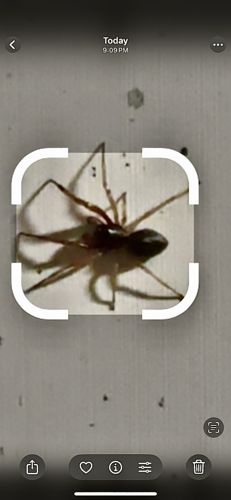Funnel Weaver Spider (or Grass Spider)
Scientific Name: Agelenopsis spp. (a common genus within the Agelenidae family)
Order & Family: Order: Araneae (Spiders), Family: Agelenidae
Size: Body length typically ranges from 10 to 20 mm (0.4 to 0.8 inches) for females, and slightly smaller for males, not including leg span. With leg span, they can appear much larger, up to several inches across.

Natural Habitat
Commonly found outdoors in grassy areas, shrubbery, gardens, under rocks, logs, and debris. They often build their webs in tall grass, dense ground cover, or near foundations of homes, especially in corners or crevices. They can occasionally be found indoors if their preferred outdoor habitat is disturbed or if they accidentally wander in.
Diet & Feeding
Strictly carnivorous, feeding on a wide variety of insects and other small invertebrates that get caught in their webs. This includes flies, crickets, grasshoppers, moths, and other crawling or flying insects.
Behavior Patterns
Funnel weavers are known for building distinctive funnel-shaped webs. These webs typically have a flat sheet-like part that spreads out, leading into a narrow, funnel-shaped retreat where the spider waits. When an insect wanders onto the sheet, the spider quickly rushes out of the funnel, overwhelms its prey, and drags it back into the funnel to consume it. They are generally shy and will quickly retreat if disturbed. Mating usually occurs in the warmer months, with females laying egg sacs in their web or a protected location.
Risks & Benefits
Risks: Funnel weaver spiders are generally not considered dangerous to humans. Their bite is uncommon unless provoked or accidentally pressed against the skin. If a bite does occur, it is usually mild, comparable to a bee sting, resulting in localized pain, redness, and swelling. No significant medical concerns are typically associated with their bites. Benefits: They play a beneficial role in the ecosystem by acting as natural pest control, preying on various insects, many of which can be considered household or garden pests.
Identified on: 8/24/2025